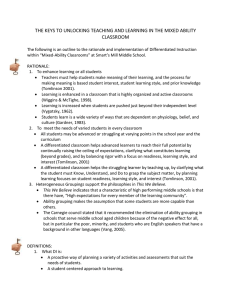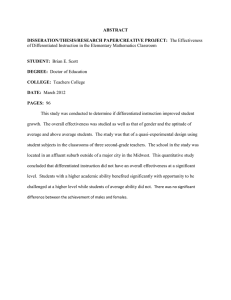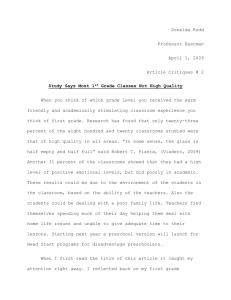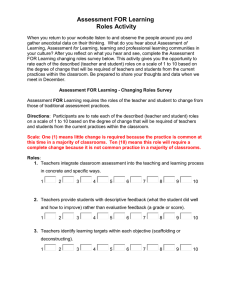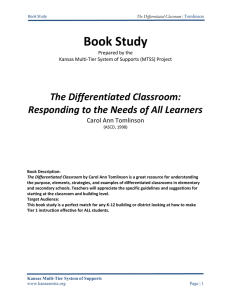Document 12891358
advertisement
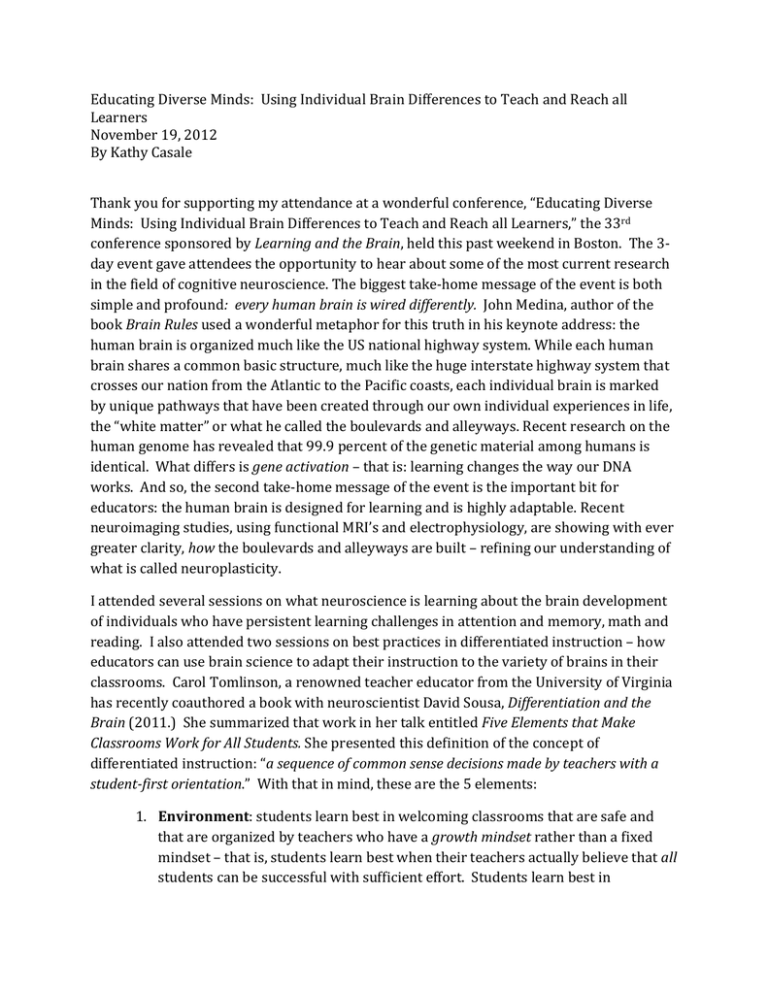
Educating Diverse Minds: Using Individual Brain Differences to Teach and Reach all Learners November 19, 2012 By Kathy Casale Thank you for supporting my attendance at a wonderful conference, “Educating Diverse Minds: Using Individual Brain Differences to Teach and Reach all Learners,” the 33rd conference sponsored by Learning and the Brain, held this past weekend in Boston. The 3-­‐ day event gave attendees the opportunity to hear about some of the most current research in the field of cognitive neuroscience. The biggest take-­‐home message of the event is both simple and profound: every human brain is wired differently. John Medina, author of the book Brain Rules used a wonderful metaphor for this truth in his keynote address: the human brain is organized much like the US national highway system. While each human brain shares a common basic structure, much like the huge interstate highway system that crosses our nation from the Atlantic to the Pacific coasts, each individual brain is marked by unique pathways that have been created through our own individual experiences in life, the “white matter” or what he called the boulevards and alleyways. Recent research on the human genome has revealed that 99.9 percent of the genetic material among humans is identical. What differs is gene activation – that is: learning changes the way our DNA works. And so, the second take-­‐home message of the event is the important bit for educators: the human brain is designed for learning and is highly adaptable. Recent neuroimaging studies, using functional MRI’s and electrophysiology, are showing with ever greater clarity, how the boulevards and alleyways are built – refining our understanding of what is called neuroplasticity. I attended several sessions on what neuroscience is learning about the brain development of individuals who have persistent learning challenges in attention and memory, math and reading. I also attended two sessions on best practices in differentiated instruction – how educators can use brain science to adapt their instruction to the variety of brains in their classrooms. Carol Tomlinson, a renowned teacher educator from the University of Virginia has recently coauthored a book with neuroscientist David Sousa, Differentiation and the Brain (2011.) She summarized that work in her talk entitled Five Elements that Make Classrooms Work for All Students. She presented this definition of the concept of differentiated instruction: “a sequence of common sense decisions made by teachers with a student-­‐first orientation.” With that in mind, these are the 5 elements: 1. Environment: students learn best in welcoming classrooms that are safe and that are organized by teachers who have a growth mindset rather than a fixed mindset – that is, students learn best when their teachers actually believe that all students can be successful with sufficient effort. Students learn best in classrooms that are designed as learning teams with members who help each other work towards a common goal. The brain science that supports this claim is related to the work on stress: elevated levels of cortisol hormone in the frontal cortex shut down attention and reduce the capacity for reflection. 2. Curriculum matters: students learn best when their teachers have absolute clarity about the learning destination, when they are engaged with relevant curriculum and when lessons are designed for understanding. Students can hit any target that they know about and that stands still for them. Brain research shows that the human brain seeks patterns – and that establishing those patterns takes time. Curriculum races are not brain friendly. Tomlinson underscored the notion that it takes bravery for an educator to notice (and adapt as needed) the relevance and engagement of their lessons. 3. Assessment matters too: student learning is greatest in classrooms that align assessment with instruction and when that assessment is very frequent. She suggested that educators who want to learn more about this element watch A Private Universe, a film produced by the National Science Foundation. Brain science shows that when knowledge gaps are not corrected early, the brain will fill in the blanks with misinformation. 4. Good teaching is about making adjustments: That is to say, when teachers keep checking to discover what their students understand – differentiated instruction naturally follows. Tomlinson asserts that providing differentiated lessons contributes to success, efficacy and a growth mindset. 5. All of the above, within the context of effective classroom management. Teachers need to be the leader of the team, making the goals and learning procedures explicit. Much more can be learned about these elements by visiting www.caroltomlinson.com
